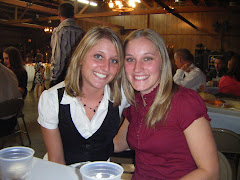*What is a Compression Fracture?*
A compression fracture is the most common type of fracture that affects the spinal column. A compression fracture occurs when the vertebral body is squished, compressed, or reduced in height.
*Causes*
Compression fractures occur when there is blunt trauma to the spine or when the bones of the spine are not strong enough. Forceful impacts, such as an automobile accident or fall, generally causes the vertebrae to crack in the posterior portion of the back and osteoporosis affects the anterior portion of the spine. Majority of cases of compression fractures are due to osteoporosis, a disease that weakens the bone due to a loss of bone density. Different types of cancers can cause a compression fracture too. Cancers from other places in the body tend to metastasize to the spine and weaken the vertebrae, resulting in a compression fracture. A compression fracture can also occur in blunt trauma to the spine. Patients that fall or receive whiplash from a MVA can produce mild to severe cases of compression fractures.
*Symptoms*
Back pain is the most common problem that patients experience with compression fractures. Patients with osteoporosis may develop multiple compression fractures from a curving in their spinal column. Most often the spine curves forward, known as Kyphosis. With compression fractures to the posterior portion of the vertebrae, nerve complaints may be a symptom. This type of fracture can affect the spinal cord and nerves. Majority of the time pain is centered around the fracture. A traumatic compression can also cause pain to radiate down the legs.
*Treatment*
The best treatment of a compression fracture is prevention treatment before a fracture ever occurs. This is best done by treating osteoporosis by exercising, watching calcium, and taking other necessary medications. If back pain becomes severe and the compression fracture becomes problematic two types of minimally invasive procedures can be done to fix the problem. The first procedure is known as Kyphoplasty. Kyphoplasty is generally done under local anesthesia in a special procedures suite. A balloon catheter is placed in the vertebra and inflated with a liquid. The inflated balloon helps to restore the collapsed vertebra. Once the balloon is fully inflated, it is deflated and the enlarged cavity is filled with a cement to correct the compression fracture. The second procedure is Vertebroplasty. This procedure is similar to Kyphoplasty, but in this procedure the cement is injected under pressure directly into the fracture vertebra. The cement hardens in about 10 minutes and provides immediate stability. These two invasive procedures are successful about 90% of the time.
*Complications*
These two procedures are done to help alleviate pain and fix compression fractures, but like any other invasive procedure there are complications that can occur. The most common complication is the leakage of the cement out of the vertebra before it hardens. If these occurs it can compress the spinal cord and nerves, causing new pain and possible neurological problems. Majority of these cases correct the problem though and reduce or eliminate the pain the patient had been experiencing.

Lateral radiograph of the cervical spine showing compression fracture on C5, loss of pedicle, spinous process, and transverse process.
http://www.jkns.or.kr/fulltext/htm/0042002015f1.htm

Compression fracture in the lumbar vertebrae





